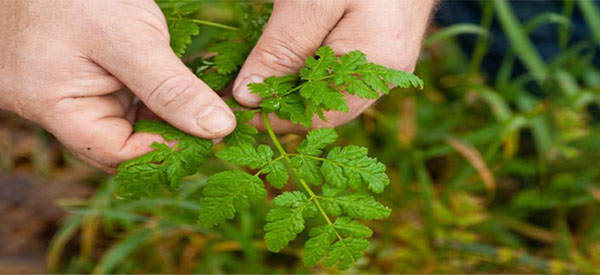
Edibility Test: Find Out Which Backyard Weeds are Edible
You already know that some weeds are edible. However, if you don’t know to tell the difference between the edible ones and those that are unpleasant – or even harmful – to eat, you’ve probably avoided any experiments with weed cookery.
Many people have already added edible weeds to their diet, though – and some of them believe this goes beyond just being a survival skill. Some weeds can be quite tasty, as well as nutritious. And, if you are concerned with survival, adding nutrients to your diet is a useful bonus. Now, if you are ready to venture out into your backyard or local park to see what parts of nature’s out-of-control landscaping might be edible, read on for some valuable information.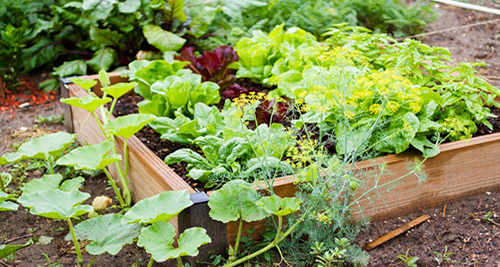
Edible Weeds Can Also Be Bad for You
I don’t want to confuse you before you even get started, but even some edible weeds should never be consumed. So, before we get into testing to see if a weed is edible, make sure to avoid weeds found in the following conditions, whether they are considered edible or not under normal conditions:
- Weeds near a road – many of the plants along a roadway have absorbed runoff and exhaust fumes from the traffic.
- Weeds growing where livestock are kept or where people walk dogs a lot – weeds can be contaminated through animal feces.
- Weeds exposed to pesticides – eating anything contaminated with pesticides can be very hazardous for a person’s health
However, if you follow those rules there are plenty of weeds around that can be very good for you, especially if you find yourself in the position of needing to survive on minimal supplies. They just need to pass the weed edibility test.
The Edibility Test for Weeds in Your Backyard
Fortunately, you can test weeds if you have any doubt about their edibility. Yet, it’s very important to test only one part of the plant at a time. For example, test only the leaves, the flower, or the stem at first.
Here are the steps you should follow to know if a weed is edible:
#1. Physically remove the plant part to be tested from the rest of the plant, rather than leave it attached, to prevent cross-contamination.
#2. With your fingers or a tool, crush the part you are testing and then smell it. What you are looking for at this point is a strong or acidic odor. However, don’t stop here, because you can’t rely on odor alone.
#3. Place a portion of the plant (that has been crushed or pressed enough for the sap to release) in the bend of your elbow for 15 minutes. If your skin does not react in any way, move on to the next step.
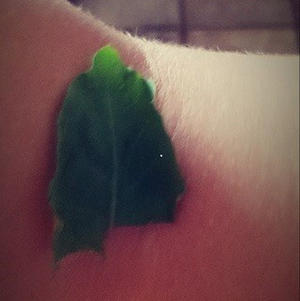 #4. This step must be done after not eating for 8 hours. Drinking water only is fine though.
#4. This step must be done after not eating for 8 hours. Drinking water only is fine though.
After checking your skin one more time to see if a rash or irritation has developed, prepare a small portion of the plant by cooking it.
Some plants contain toxins that are often destroyed during the cooking process. However, if you can’t cook it, continue the test with the raw plant.
#5. Hold a small part of the plant against your lip and hold it for a minimum of 3 minutes. At this point, you are watching for a reaction, such as itching, burning, or any other irritation.
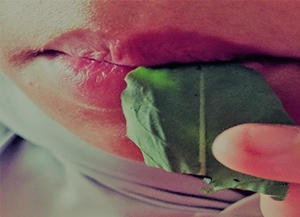
#6. If you do not react at all after three minutes, but that sample against your tongue, without chewing (or swallowing) it, for approximately 15 minutes.
You will be looking for the same reactions as above – itching, burning, or irritation of any sort.
Once you are sure there isn’t a reaction when holding it on your tongue, the next step is to chew it thoroughly and hold it in your mouth for approximately 15 minutes, without swallowing.
#7. If there is still no reaction, go ahead and swallow the portion you just chewed, but no more.
#8. At this point, wait for eight hours without eating anything else. If you start to react to any kind during that time, induce vomiting and drink plenty of water.
#9. After the 8 hours is over and you have had no reaction or ill effects, eat about ¼ cup of the plant, prepared in the same manner as above. Wait an additional eight hours. Again, if you experience a reaction, induce vomiting and drink water.
After carefully following the above steps in testing the weed, if no reaction has occurred the part of the plant that was tested can be considered edible and safe to consume as prepared in the steps you followed. If you plan on consuming additional parts of the weed, they should each be tested in the same manner.
If you plan to increase the amounts you consume, do so slowly. Keep in mind that any time you consume an unfamiliar plant in substantial portions you risk unfavorable reactions such as nausea, cramping, and diarrhea, especially when eaten on an empty stomach. So, even edible weeds should be eaten in moderation until tolerance is built up.
You may also like:
If You See This Weed Growing In Your Yard, Don’t Pick It – Here’s Why
400 Wild Plants That You Can Forage For (Video)
Potassium Permanganate: Why You Need It in Your Survival Kit?
Burdock: The Annoying Weed That Can Save Your Life
15 Common Herbal Mistakes You Are Probably Making Right Now!

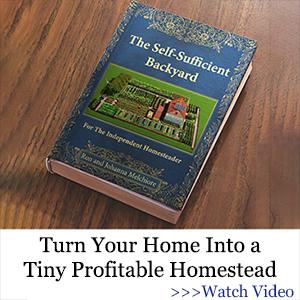
Thank you for these incredibly useful articles regarding edible plants. Our ancestors would be proud that we are attempting to revive this lost art that they used daily to sustain their lives. It may one day sustain our own lives or at least make us more independent. Keep up the great work!
Hi Danny,
Thank you so much for your kind words. We really appreciate it.
God bless!
Thank you so much for these articles. I have several of the books mentioned but would like more.
Hi Deborah,
Thank you so much for your feedback. We really appreciate it.
God bless!
Are the books a real books or they a down loan? I want real soft or hard bound books not down loads.
Hi Glenda,
Thank you so much for your comment. For the Self-Sufficient Backyard we are working on a physical version as we speak. They should be out in 2 weeks 🙂
But of you are referring to The Lost Book of Herbal Remedies it’s available in physical form. I can send you the link if you are interested.
God bless!
I order the Lost Book of Herbal Remedies, accidentally clicking the e-book version. I emailed them and they were kind enough to send me the printed book, which is what I wanted, just for the cost of shipping (since I’d already bought the ebook.) It arrived within a few days, and is a GREAT book, stocked with full-color clear photographs throughout that really help with identification. Very much worth the price, full-color printing at the size of this book is significant! I recommend it!
How would this work on the poison hemlock or it’s relatives? I hear even an exceedingly small amount may result in a rather nasty demise. At which step would a caution be realized, or would things be too late?
I also want to purchase a hard bound book “The Lost Herbs” by Nicole Apelian like what Glenda Husband wants. How much do they cost? Not a down load info.
Hi Erlinda,
Thank you so much for your interest in the book.
Here is a website where you can purchase the book: https://www.thelostremedies.com/book/
God bless!
I got that book, but it is NOT hard-cover as shown. Still
, it IS very informative!
Another reaction to look for is any numbmess.
Hi Kayak Jack,
You are right. Thank you for the suggestion.
God bless!
In no way is this safe. Possibly days to weeks (if allergen prone) of discomfort is not the price one wishes to pay for The possibly miniscule benefits. AT ALL!!!!
DO NOT CONTACT AGAIN WITH THESE WEIRDLY STUPID SUGGESTIONS!!!
Hi Ciara,
Thank you for your feedback. We appreciate it and will take everything you said in consideration.
God bless!
What a rude comment. You clearly do not understand the concept. If a solar flare knocked out all electricity tomorrow and destroyed everything that started with the push of a button, and it took months, maybe years to repair, What would you do? What would you feed your children? What would you use to close their wounds, stop their cough? Don’t be so arrogant. In an instant, this world could be reduced to the technological equivalent of the year 1850. The main difference is that most people would not have the survival skill to manage daily life without electricity. With your outlook as it is, you would most likely be among the first to perish. Please try to see the value of the information that is being presented here. This is not voodoo! It is how people survived through all time until the last 150 years or so with the advent of the supermarkets and drug stores. thousand of people in the 1800s starved to death in fields full of food because they were afraid to eat what they did not know. These examples of proofing the use of unknown plants is excellent. Every home should have a library of of books about what to eat if everything goes bad. Don’t do it for yourself, do it for your children and grandchildren. Give them the gift of life. It is common knowledge that if there is a sun flare like there was in 1859 (look it up), that 90 percent of the population could perish within 18 months. Books on edible wild plants, medicinal plants, shelter, and security in such situations could put your family in the smaller percent that survives. I understand that if you have never had to forage for food you may not understand what is being presented here but, please allow for the possibility that it make save lives. Maybe many lives. I guess we are fortunate to live in a world where people are afforded the opportunity to think that the discomfort of allergies supercede the pains of fighting for survival of ones self and family.
How do you think we have the modern medicines we have? Dr. Apelian has many books on identifying edible plants, weeds, etc. The lady is an expert on the subject. There are some of us, who do want this information, in the event of an emergency. This is the safest way to identify edible plants if you do not have a reference on hand. If it isn’t for you, it doesn’t make it wrong.
Nicole your book I just ordered is truly amazing. I love herbal remedies and edible plants for both nutrition and health.
Growing up along side the Navajo and Zuni reservations in New Mexico I acquired through personal experience some of their practices of natural medicines.. One that works especially well on animals. If your canine contacts Parvo Virus they will most likely die if they don’t get a vets help. Even then it’s a 50/50 chance.
Do this instead: Pick the tips of a juniper tree (Cedar). No more than 1 1/2″ of the tips. (NO BERRIES) Chop up and make a strong tea. With syringe squirt 30 cc’s down large dogs throat and 15 cc’s on small dogs. They’ll be up in a few hours wagging their tails. Has worked every time I’ve used it over the past 40 years. They even use it on their own sicknesses and as a maintenance drink. Worked twice on horses with distemper. Old ways!!!
Hello Wayne,
Thank you so much for your comment and for sharing this information as well!
God bless!
Do you use this method for any situation with doggies. Thank you. Appreciated.
Ciara might be rude, but she does have a point. I think first the order would be to use a foraging book, or go with someone who knows about foraging, and then use the method described here ….don’t just go out and find any plant and try. You must first eliminate that it MIGHT be a non edible plant as best you can.
If we must , eventually, rely on only what we can forage, this would be a possible way to determine what can be eaten…we all must chose how far we’ll go eating wild foods.
[…] Edibility Test: Find Out Which Backyard Weeds are Edible […]